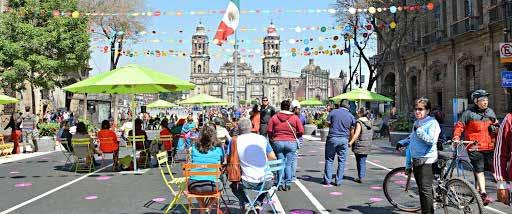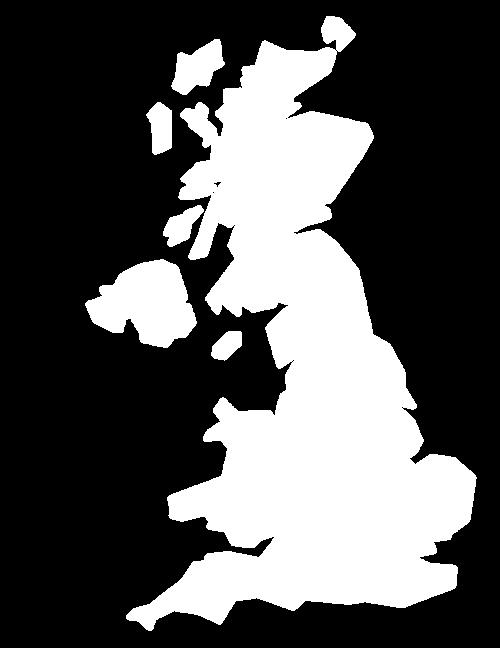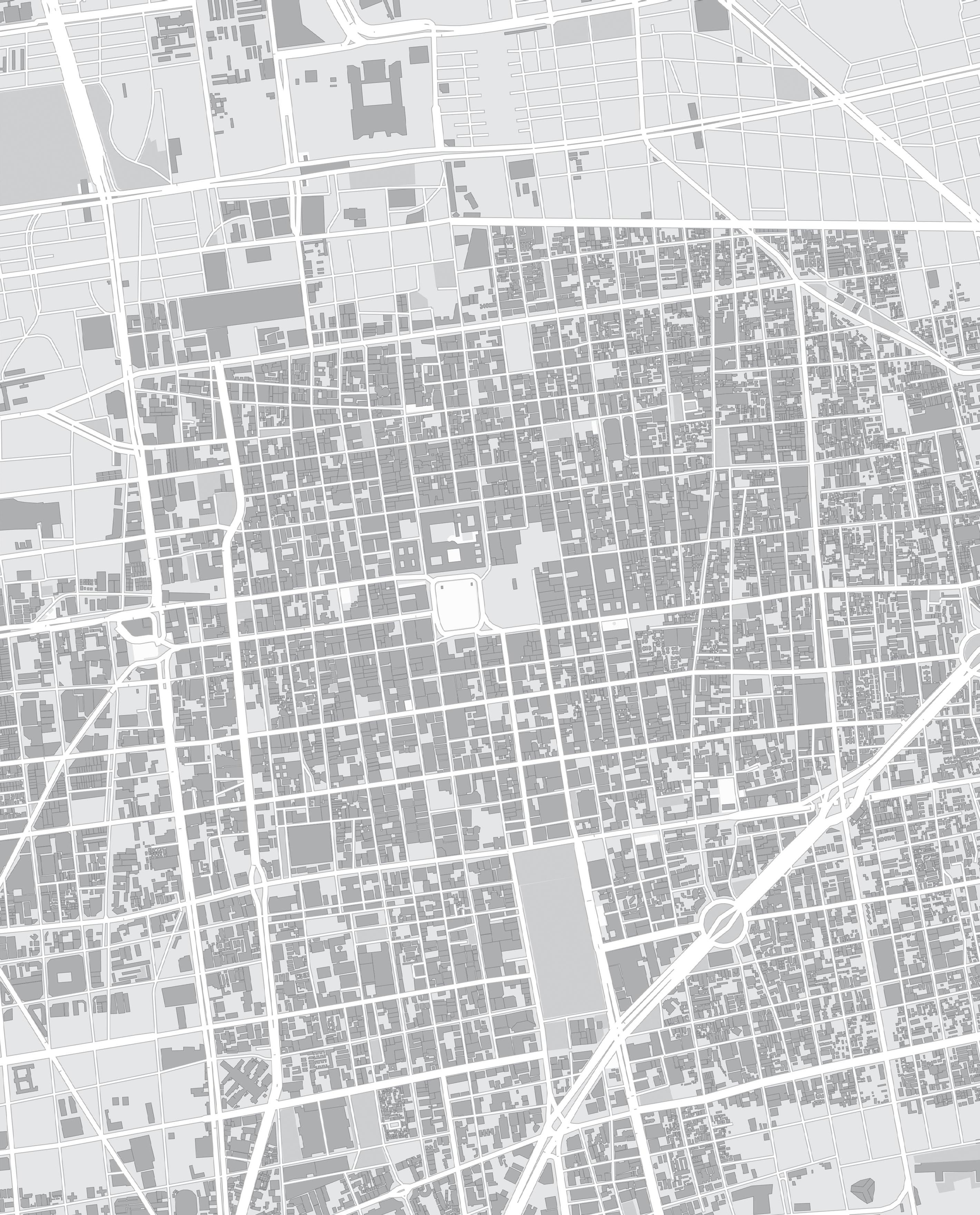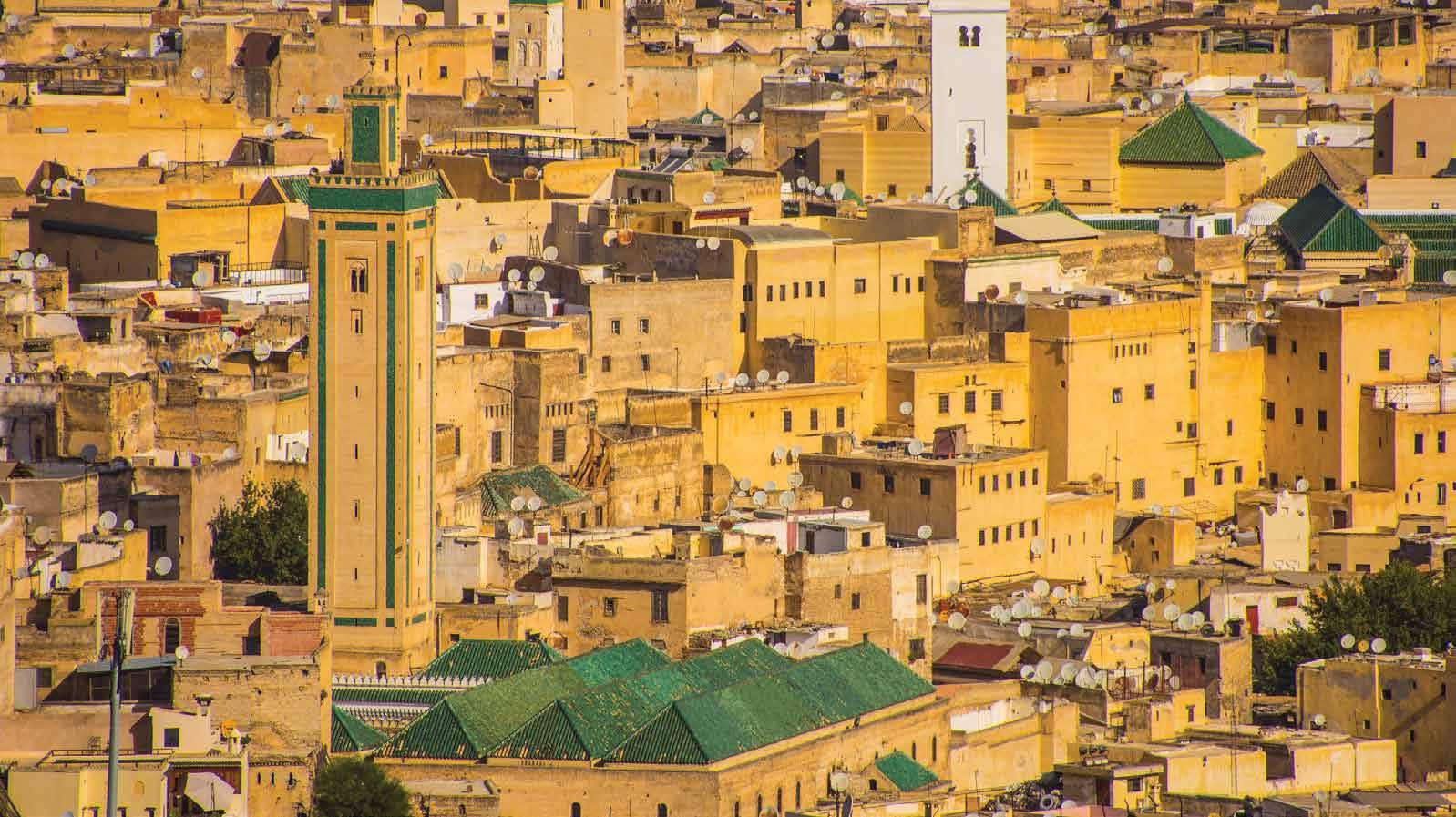
22 minute read
Case Studies
Medina of Fez, Morocco
CULTURAL HERITAGE FINANCE ALLIANCE
Key Features
The regeneration of the Medina of Fez has set a compelling precedent for addressing social goals through heritage development. The path to success was not always smooth, but the initial institutional investor’s fundamental work of infrastructure improvement and other visible ameliorations gave confidence to the private and philanthropic sectors to initiate their own projects for restoring historic structures and starting new businesses in the Medina.
Efforts to address poverty and dereliction in the Medina began with international seminars surrounding World Heritage designation in 1981. When the World Bank focused on the Medina as part of its millennial program, more than half of the 13,000 buildings in the historic Medina were threatened with collapse. The physical environment was recognized as a key factor in the continued decline in well-being and economic opportunity in the oldest part of the city. A $14.3 million loan program in 1998 by the World Bank created an opportunity for national and municipal agencies to work together to address both physical issues and social needs. Residents were the focus of the program, consulted in project surveys, trained in conservation techniques, and employed in carrying out the building restorations. Maps of themed tourism routes were developed and installed citywide in an effort to reduce congestion and distribute the positive economic impact of tourist flows through the Medina.
A formal structure to attract complementary financial sources—not just those controlled by the government—could have accelerated the urban transformation. Nevertheless, additional investments in heritage conservation, pollution mitigation, and social programs amounted to three times the World Bank’s original loan and much larger investments over the next decade.
Success Factors
• Improved livability through stabilization of residential building fabric • A ripple effect of individual restorations and a growing circle of investors • Curated tourism circuits and visitor accommodations feature the distinctive culture of Fez
• More than $200 million in Moroccan and international government investments in the subsequent decade
IN BRIEF
Location
Medina of Fez
Area
375 hectares
Program Type
Development finance for poverty alleviation through heritage regeneration
Program Objectives
Urban regeneration and improvement of quality of life through rehabilitation of historic buildings, improvement of access via traffic flow, infrastructure, safety and institutional strengthening
Duration
World Bank program: 19982005; subsequent regeneration: 2005-present
Sponsoring Entity
World Bank/International Bank for Reconstruction and Development
Business Model
Debt financing via loan to the municipal and national governments of Fez, Morocco
Current Leadership
David Malpass, World Bank President
Fouad Serrhini, General Director, ADER-Fés
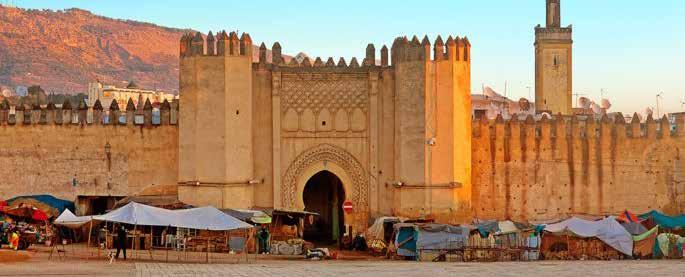
Bab Mahrouk Gate: the gateway was restored by a private bank after the World Bank-funded restoration campaign began.
Program Development & Implementation
Engagement of the World Bank
Over centuries, under pressures of over-population and lack of maintenance, the living conditions of the Medina of Fez, Morocco deteriorated. Crumbling building stock, high poverty levels and environmental pollution threatened the well-being of inhabitants. The urgency and opportunity to make dramatic improvements attracted investment by the International Bank for Reconstruction and Development—an arm of the World Bank Group—in the late 1990’s in a landmark initiative specifically targeting cultural heritage conservation as a lever of poverty alleviation and urban regeneration.
An Historic Center of Trade and Learning
Fez was one of the great cities of the Muslim world. It had been founded in the late 8th century and grew to prominence as a center of learning and trade, reaching its apogee in the 13th and 14th centuries. At its core is the 375-hectare walled labyrinthine Medina, composed of two districts—Fes El Bali (old town) and Fes el-Jadid—with a total of some 160,000 inhabitants. The Medina retains its medieval character as one of the largest urban car-free zones in the world with a maze of streets, pedestrian alleys, narrow passages, courtyards and fountains. Traditional earth packed walls for construction of mosques, residences and palaces are complemented by colorful tiles and mashrabiya latticework woodcarvings. Fez is a city rich in artisan traditions, from the namesake hat whose red dye originated centuries ago in the city to leather goods, ceramics and metalwork. The layered history of Fez’s multi-cultural inhabitants is echoed by the architectural styles from Andalusia and synagogues of the Mellah district in Fes el-Jadid, reflecting what was once a Jewish quarter with over 20,000 residents and its own spoken dialect. The historic Medina is preserved in part due to the 20th-century French colonization approach that moved city infrastructure to a Ville Nouvelle to the west, and shifted the capital of Morocco to Rabat. Coupled with a conservation philosophy that held sacrosanct original historic material, the investment in the modern city meant neglect of the Medina’s physical maintenance and its consequent decline. The strained urban setting became overcrowded due to gradual migration into the Medina from rural areas due to economic conditions caused by drought. With bowed ceilings, cracked walls, and crumbling foundations, buildings were unable to support the Medina communities through housing or commercial opportunity. With more than 87% of its 13,385 buildings considered historic, and over half of those decaying, threatened with collapse or in ruins at the turn of the 21st century, Fez was an ideal city to pilot a comprehensive approach for rehabilitation of built heritage as a driver of the much-needed economic and social revitalization. The challenges and successes provide a vital case study in innovation and collaboration in urban conservation.
Attracting International Attention
Spotlighted by inscription on the UNESCO World Heritage List in 1981, Fez enjoyed extensive study and attention from the Moroccan government and the international community. In the early 1990’s, notable monuments gained attention for restoration such as the Dar Adiyil palace financed by the Italian government. The 1993 Second International Colloquium of World Heritage Cities, held in Fez and organized through UNESCO, brought together interested parties in finance, urban planning and sustainable development to discuss the need for the safeguarding of Fez. A socioeconomic survey of the Medina
was a core driver of the strategy, having identified the extreme conditions of poverty and barriers to improvement. The World Bank was considering a multimillion dollar debt investment in Fez, and its Director, James Wolfensohn, was a supporter of the idea. Wolfensohn was a pivotal advocate for the urgency to invest in Fez. With data in hand he could rally the support of the World Bank Board of Directors.
Prominent members of the academic community prepared extensive economic evaluations and projections, with pioneering use of contingent valuation applied to cultural heritage, rendering Fez an important pilot study in heritage economics. Project strategy was designed by a team from Harvard’s Institute for Housing, with urban planning expertise instead of an architectural conservation specialization. Surveys of local residents guided the planning of the implementation. Projections of the economic impact in terms of job creation and tourist revenue were impressive. Fez was UNESCO’s first international campaign for rehabilitation of an Islamic city, and its success was potentially replicable. The methodology applied to the program for Fez was intended to upend the standard, traditional approach to conservation of historic cities that focused on monuments. Instead of elevating the built fabric as the primary stakeholder, the communities’ needs would guide the efforts. Surveys of inhabitants were conducted and the results provided overwhelming evidence of their interest in shaping and participating in the proposed actions. As Dr. Hassan Radoine, a participant in the early work comments, “The World Bank wanted to know that the heart was healthy.” That is, they needed to have confidence that the Medina was going to live on past the bank’s investment. The citizens on the ground were ready and willing to contribute to the success. The World Bank projected that its investment would be amplified by enthusiastic contribution of the residents’ own financial and sweat equity investments in preserving their homes and heritage. The World Bank’s investment was unprecedented, in part as the first effort in conservation of an Islamic city, and because the loan involved three separate MOU’s regarding the disbursements. The loan of $14.3 USD was distributed to the Moroccan Government, split between the national and municipal levels. The World Bank approved the extraordinary proposal for a loan to focus on cultural heritage and signed three MOU’s, one with the national Ministry of Finance, one with the local municipal Prefecture, which had been formed in 1985 and would closely coordinate building conservation through a local agency. The Agence pour la Dedensification et la Rehabilitation de la Medina de Fes (ADER-Fès), created prior to attend to urgent stabilization and/or demolition of active collapses, would coordinate and focus on the technical aspects of restoration of the historic built heritage, with its own separate project agreement for delivery of implementation. Fundamental to success was an update of the GIS equipment which facilitated a thorough survey of Medina buildings and to support strategic planning and monitoring of project progress.
Implementation and Course Correction
A multi-pronged approach was at the center of the vision to revitalize Fez and improve its social, economic and infrastructure conditions. ADER-Fès would work in concert with local inhabitants, providing conservation guidance, materials and technical assistance to address building conservation needs. The World Bank loan would support the critical operations to improve the built heritage and infrastructure. In addition to built heritage conservation aimed at enhancing housing, physical interventions were aimed at improvement of: • traffic circulation (for tourists, deliveries and rapid response) • parking • an emergency circulation network and • environmental pollution through chemical mitigation and solid waste management. By-products of the artisan manufacturing of Fez resulting from tanning and dying processes for leather and chemical waste from metalworking and were a source of pollution. The growth of craft workshops adjacent to residential areas of the Medina caused contamination and threats to water safety and health of residents. Managing and mitigating the accumulation of these chemical and solid wastes was an initial goal of the World Bank investment. However, after consultation proved the artisan workshop relocation was not favored by stakeholders these elements were dropped from the plan. The World Bank investment was intended to catalyze private participation and investment with the parking and solid waste management aspects considered appropriate for public-private partnership (PPP) contracts. However, solid waste collection had already been contracted by the municipality when the loan term began. A lack of interest in construction of the parking lot meant that this PPP never materialized either. While the citizen survey of the Medina had identified these needs, their incorporation into the World Bank plan was without the confirmation of private participation. Official project objectives were thus modified in 2004 to exclude the development of the parking and waste remediation through PPPs. The ambitious regeneration campaign for Fez proved not without challenges. The scale of the work in Fez was initially confronted by a mismatch of experience and capacity of teams and lines of communication involved. The municipality and ADER-Fès had never coordinated on such a scale with the central government and capacity building was a gradual process. Administrative challenges encountered by the local units adopting the World Bank procurement and financial procedures caused delays. In fact, organizational restructuring of ADER-Fès plagued progress in the first three years of the loan. Ultimately an extension of loan term was necessary to facilitate disbursement of funds and implementation. A disproportionate 70% of the loan was disbursed in the final two of the seven years. Despite the
absence of efficient centralized management, or perhaps because of it, the World Bank debt investment in Fez ultimately achieved its mission to provide an example of ground-up revitalization of the communities through the regeneration of its built heritage.
A Widening Circle of Participation
The paradigm shift from a top-down building conservationdriven philosophy to citizen-driven action meant that advancement of the World Bank initiative followed the organic nature of the growth of the Medina itself. Local residents participated, learning traditional methods and gaining technical skills for future maintenance and employment while they restored their homes. As one unit was rehabilitated, neighbors would witness the process and follow suit. As absentee owners learned of the neighborhood transformations, they too returned to restore their homes. Residential enhancements were coupled with infrastructure improvements. These included: • upgrading the water network and sewage • enhancing electricity and telephone grids • moving facilities like schools and nurseries into the Medina Improvements in quality of life were massive and included such basics as enhanced lighting on the streets and improved plumbing infrastructure (the latter often was the cause of building collapses). As a pedestrian environment the Medina’s design was restrictive to emergency vehicles. Engineering transit routes by ramping over stairs, gave access to all corners within 100m of a navigable route for golf cart-sized vehicles, increasing security for all visitors and residents.
Economic benefits for the Medina were flowed from the reinforcement of local institutions through capacity building, and otherwise largely planned through capitalizing on the local artisan traditions to fuel, job creation, private investment and a notable increase in tourism.
Spotlighting Fez’s cultural heritage in an accessible way was most effective at positioning Fez as a tourist magnet. A mapping system with 700 plaques offered a multilingual guide that defined six tourism circuits and guided visitors to them through the maze of the Medina. A visitor might choose to take a ‘Castles and Gardens,’ a ‘Crafts’ or a ‘Walls and Fortresses’ tour. This program revolutionized the visitor experience of the Medina. Dispersing sightseers from a few well-trodden paths, the “tourist trails” led tourists through different neighborhoods they might otherwise have not experienced, thereby spreading the potential for economic uplift. The proof of concept in Fez’s Medina was replicated elsewhere in Morocco, including the historic cities of Marrakesh, Casablanca and Essaouira and continues to be a model for cities that are trying to mitigate the effects of concentrated tourist traffic.
Other augmentation of tourism amenities included the restoration of:
• 3 historic gardens • 2 public spaces including a bus parking lot at the city Gate and • a Heritage Center in a restored building.
A complement of partners contributed to the ignition of financial support and life into the Medina. The Moroccan Local initiative for Human Development (ILDH) worked on sanitation, craft ateliers, libraries and street vendor space. The Arab Fund for Social and Economic Development supported rehabilitation of 7 km of water networks, which had contributed to the instability of housing. The Banque Populaire funded the Bab Mahrouk Gateway restoration.
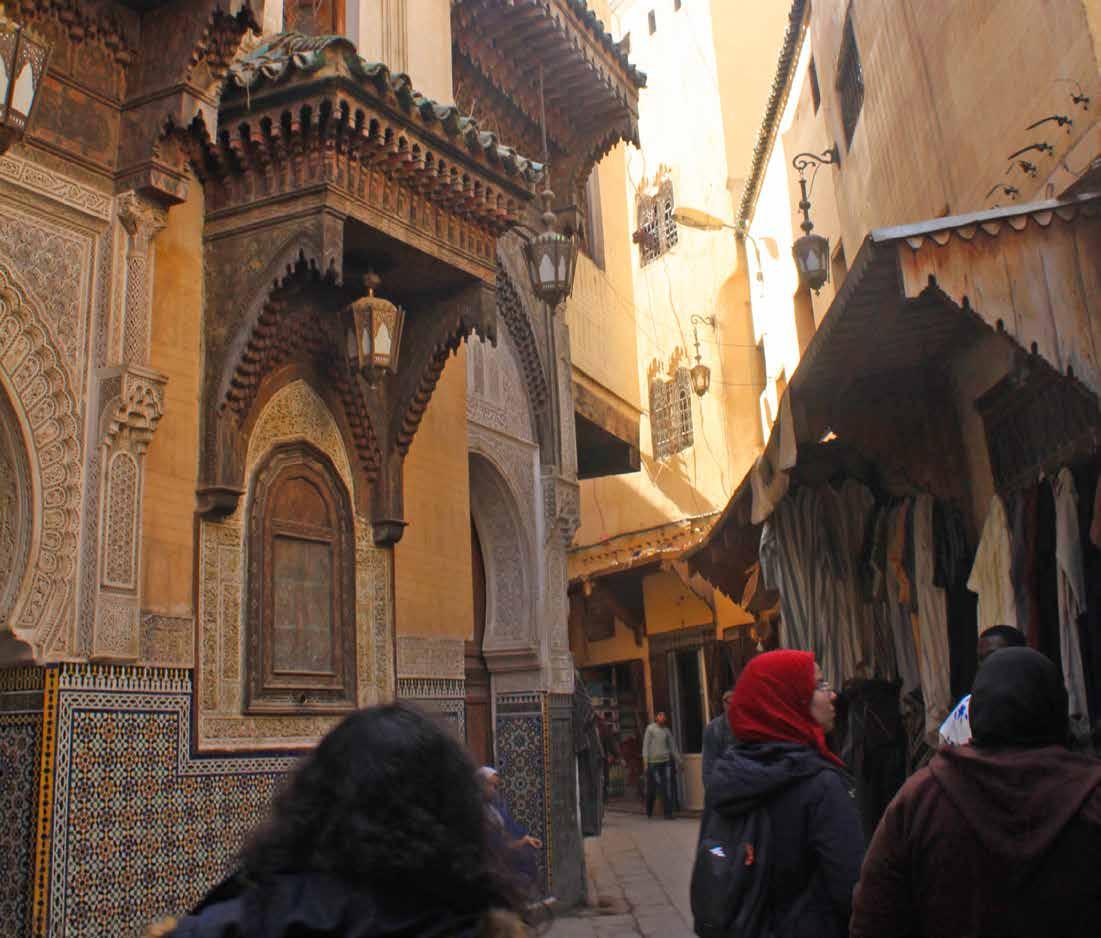

What Was Achieved, What Not, and Why
During the term of the World Bank loan 132 housing units or workshops were rehabilitated with matching grants to their owners, with an additional 107 interventions to communal spaces with resident participation. In collaboration with neighbor- hood associations, pedestrian streets reaching 547 buildings were repaired while 56 collapsing houses were consolidated. Although this was a small portion of the houses in need, the momentum brought by the World Bank investment propelled further rehabilitation work. The security brought by the interventions is reflected in the small victory that 2005 was the first year without loss of life due to building collapses in the Medina. Through built heritage conservation and environmental cleanup projects including the clearing of derelict spaces and waste accumulations, employment opportunities were created. Non-profit organizations were proactive in training programs for local inhabitants. A strategic study conducted by ADERFès described training for twenty community organizations, 10 micro enterprises of the construction sector, 20 conservation and rehabilitation professionals and 150 staff of ADER-Fès, municipal and regional authorities. Assessments defined the total labor outcome as equivalent to 1000 person years of low skilled labor. However, despite these positive statistics, job creation was one-sixth the projected amount. Poverty alleviation, the underlying goal of the World Bank investment, was not achieved on the scale intended.
While the World Bank investment in Fez may be considered to represent a best-practice case study for integrating heritage in development, the ICR (World Bank Implementation Completion and Results) review of 2006 is reserved in terms of describing its immediate success. Compared to the projected economic impacts of the project, including an Economic Rate of Return (ERR) of 13.6% and NPV of $16.7 M, the final report tally of actual Economic rate of return at -26% and NPV at $-0.5M were disappointing. Analysts noted that projected values were unmet due to the “overoptimistic assumptions” that led to unrealistically high expectations. The relatively low percentage of inhabitants whose housing situations were improved through renovations was of material concern. None of the original goals of the initiative were fully achieved, since sanitation improvements and pollution mitigation were not completed due to bureaucratic roadblocks. The proposed public-private partnerships in the strategic plan never materialized and thus the construction of a parking lot, seen as otherwise unsustainable, was aborted. Contested ownership of buildings slowed much of the building conservation process, especially when coupled with the displacement of residents required for some infrastructure improvements. The reality was that many elements of the program were successful, but perhaps not as successful as the overzealous projections made during the planning and negotiation phases. Quantitative tools can predict, but not tell the whole story of the intangible benefits of the sum of interventions—and this is a common challenge of cultural heritage work. In the long term, the World Bank’s foray into investment in cultural heritage in Fez showed that development bank debt instruments, usually used for much less colorful goals, could be instrumental in revitalizing culture.
Crafting the Future
What was accomplished in Fez through the World Bank investment far exceeded the numerous building repairs. The complex fabric of the Medina’s cultural heritage in architecture, craft traditions, and community life was consolidated literally and figuratively. To prioritize the daily lives of residents, while weaving the threads of heritage into an accessible tourism offering for visitors, was a world-class example of the potential of urban regeneration. Engagement of the citizenry invigorated and capitalized on the greatest assets of the Medina: the communities and their unique histories and traditions. The World Bank loan inspired parallel investment. Private investment further supported the preservation of thirty-three historic buildings that were reused as boutique hotels. Other foundations and international donors rehabilitated more buildings and sites ($3.3M), preserving two major classified monuments and ten public fountains. In fact, parallel investment of outside partners was valued at $42.9M, three times as large as the World Bank loan (Bigio and Licciardi, 26). The Moroccan government continued investment in residential buildings and tourism after the term of the World Bank loan, including a pilot project, the Ziyarates, or Lodging with Locals program that facilitates home stays for tourists. Private investment has continued, including construction of eight hotels (at a value of $29.7M). Analyses of the artisan sector completed for the World Bank were instrumental in later work that focused on this sector. Development of artisan small businesses was financed with support of the Millennium Challenge Corporation (2008-2013), with over $100M dedicated to pollution mitigation and equipment upgrades that had been intended in the WB plan. A 2013-2017 program with expenditure by the Moroccan government of $75M (UNESCO World Heritage Review, 26) continued to augment the impacts. Other unrealized elements of the original World Bank proposal such as parking facilities are central to the most recent Fez Medina 2018-2023 Vision plan for city development. Cultural heritage is now central to the development strategies of the leaders of Morocco, not just in Fez but in other cities as well. This can be attributed to the visionary World Bank investment in Fez which signaled and proved its belief in the return gained by showcasing cultural heritage as a driver of economic growth and social benefits.E
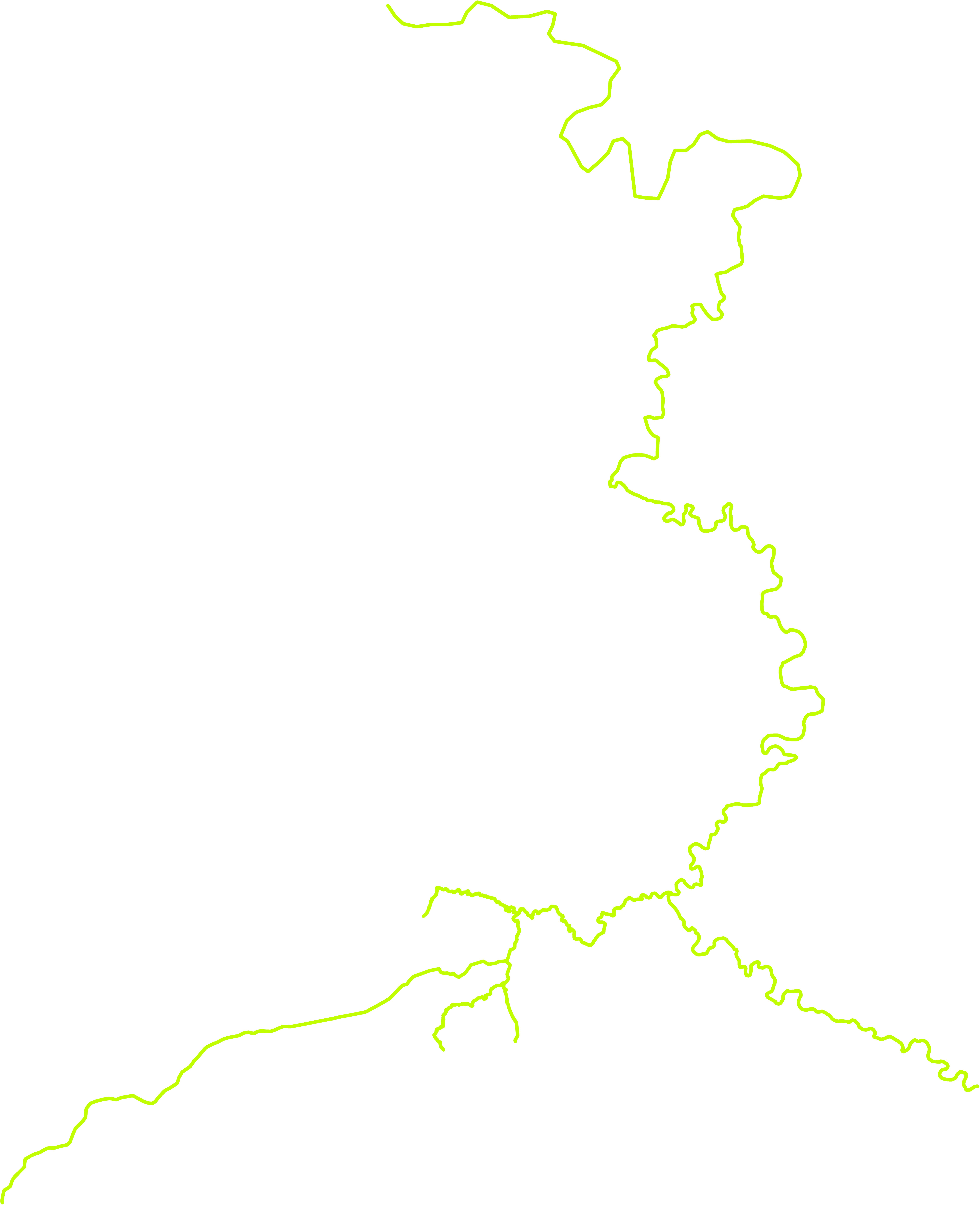
TOURISM CIRCUITS
1 2 3 4 5 6 Walls and Ramparts
Handcrafts
Monuments and Souks
Wisdom and Knowledge
Palaces and Andalusian Gardens
Fes Jdid Bab Guissa 4
Bab Ain Azliten
Bab sagma Bab mahqouq

5 3
6
Bab lamar Bab semmarine Bab riafa Bab lahdid
Bab jdid
Aerial view of the Medina showing contemporary themed tourist routes and major city gates
2 Bab Sidi Boujida
Bab khokha
1

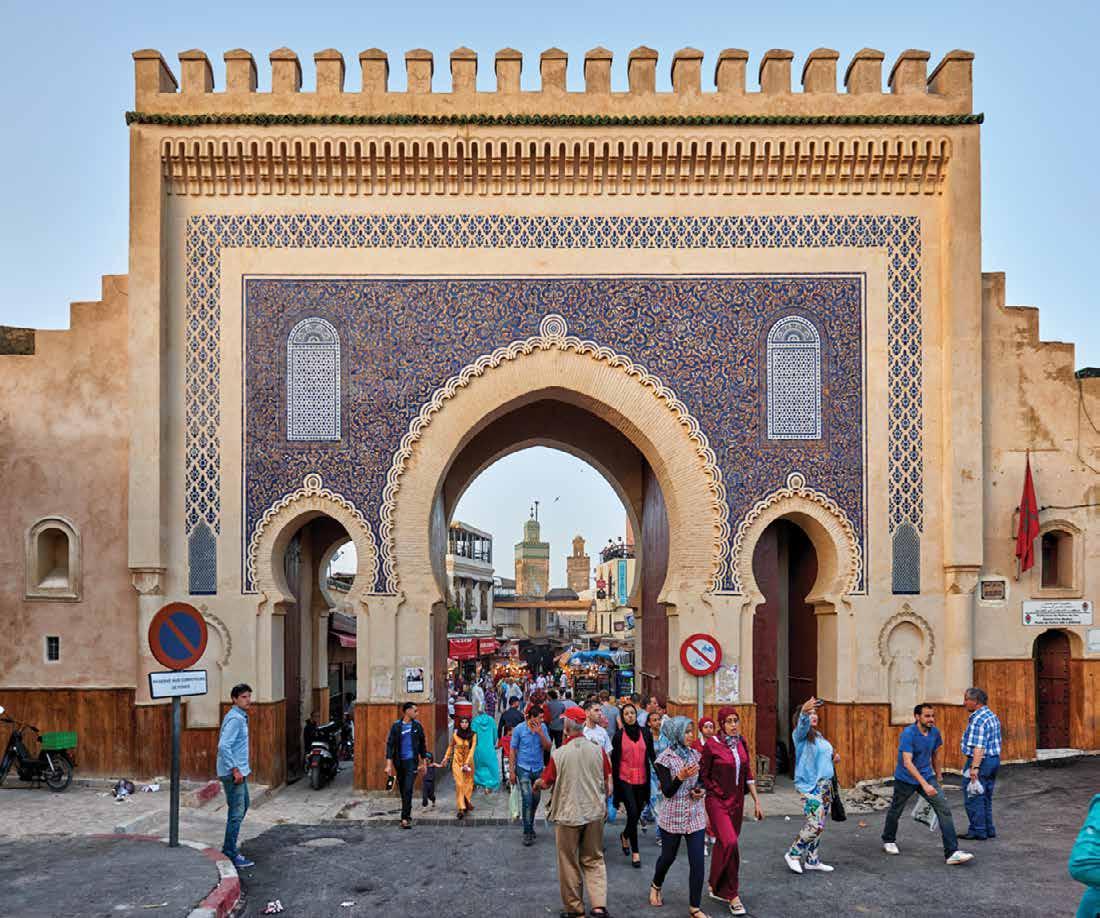
Timeline
1976 Launch of International Campaign to safeguard the Medina
1978 UNESCO commissions Fez Urban Development Plan (SDUF)
1980 Mr. Amadou Mahta M’Bow, then Director General of UNESCO, launches appeal for restoring the Medina
1981 Inclusion of Medina on World Heritage List
1982 Delegation for the safeguard of the Fez Medina created in the Moroccan Interior Ministry
1985 Fez Medina administrative structure formalized with a Municipality and Prefecture
1989 Moroccan government creates ADER-Fès (Agence pour la Dédensification et la Rehabilitation de la Médina de Fès)
1990s Private international support of restorations: Fondoul Nejjarine, Madrasa al-Bouinaniya, Dar Adiyel, and Bab al-Makina
1992 GIS system is launched - an important tool to support all works
1993 Italian government pays for Dar Adyal Palace restoration, the first project completed in UNESCO initiative
1993 UNESCO hosts colloquium on “The Financing of the Rehabilitation of the Historic Cities by Whom? How? And Why?”
1995 Rehabilitation plan of Fez Medina by ADER-Fès team
1998 World Bank funds approved (29 Oct)
2003 World Bank agrees to extend term of loan by 23 months and to reduce amount of loan proceeds by 30%
2005 World Bank funds closed (30 Nov)


Financial Performance Summary
Information Item Description
Transaction Summary World Bank (WB), International Bank for Reconstruction and Development (IBRD) loan funds to the Government of Morocco (GOM) with disbursement at the national and municipal levels
Investor(s)/Lender(s) World Bank IBRD
Amount
Project total: USD $14.3M with loan from the World Bank of $9M, co-financing of 42.7M and $2.6M contribution from the Government of Morocco
Instruments
Debt financing through two separate IBRD loans, IBRD44020 and IBRD44030
Investment Mechanism Loans to the municipal and national governments were disbursed to public agencies and private contractors who implemented the work. Repayment to the World Bank was completed by the Goverment of Morocco.
Use of Proceeds
Currency
Terms
WB loans supported work on built heritage, tourism and emergency access route development, infrastructure, and institutional resilience. Allocations made: 23.8% for upgrading historic housing stock and expanding tourism ($3.4 M), 47.5% to emergency access route creation ($6.8 M), 16.8% towards reducing poverty by creating employment ($2.4 M), 11.9% to capacity building for local agencies ($1.7 M).
Moroccan Dirham
Two loans intended to be $7M. Due to project changes, disbursal and interest were different. IBRD44020 had an interest rate of 1.23% and IBRD44030 had an interest rate of 1.16%.
Fees and Expenses IBRD44020 = $113,987.10; IBRD44030 = $103,234.07
Closing Date/Time Frame
Private Investment
1998-2005
World Bank investment in Fez spurred parallel public, private and philanthropic investment in complementary initiatives. The non-public contributions are calculated to be equivalent to $42.9M, or three times the total project amount.
Sustainable Development Goals
The World Bank initiative in Fez, Morocco contributed to positive economic, social and environmental impacts. The work directly supported by the World Bank during the program term 1998-2005 made diverse contributions that can be mapped within the context of the Sustainable Development Goal framework. As important, however, were the complementary private and philanthropic initiatives that followed the work carried out with World Bank loan funds.
GOAL 1 End poverty in all its forms everywhere:
• The work of the World Bank had a poverty alleviation focus that targeted quality of life for all inhabitants through improvements in housing, infrastructure, employment opportunities and access to services. • Wealth creation was supported through employment, with the equivalent of 1000 person-years of labor produced as an outcome.
GOAL 4 Ensure inclusive and equitable quality education and promote lifelong learning opportunities for all:
• Skills training for local communities was integral to the built heritage conservation program, including the training for 150 staff of ADER-Fes and for 20 community organizations, 10 micro enterprises of the construction sector, 20 conservation and rehabilitation professionals.
GOAL 8 Promote sustained, inclusive and sustainable economic growth, full and productive employment and decent work for all:
• The equivalent of 1000 person-years of low skilled labor was generated during the term, with demand for construction job skills promising to continue to create value over workers’ lifetimes.
GOAL 9 Build resilient infrastructure, promote inclusive and sustainable industrialization and foster innovation:
• Infrastructure was strengthened by improvements in the residential building stock, electricity networks, street lighting and water infrastructure.
GOAL 11 Make cities and human settlements inclusive, safe, resilient and sustainable:
• Rehabilitation of 132 housing or workshop properties through repairs and upgrade of infrastructure. • Fifty-six collapsing houses were consolidated and pedestrian streets reaching 547 buildings were repaired.
GOAL 12 Responsible consumption and production:
• The re-use of construction materials employed by restoration of building stock created significant reductions in waste that entered landfills compared to the alternative of demolition.
GOAL 17 Strengthen the means of implementation and revitalize the global partnership for sustainable development:
• Public, private, and philanthropic international partners joined in financing and implementing complementary aspects to the initiative. • Municipal and national government agencies of Morocco collaborated together and with the international community.
Sources & Documentation
Akdim, B. and M. Laaouane. (2010). “Patrimoine et developpement local à Fès: Priorités, acteurs et echelles d’action.” Norois, no. 214 2010/1, p. 9-21.
Bigio, A. and G. Licciardi, (2010) The Urban Rehabilitation of Medinas: The World Bank Experience in the Middle East and North Africa, Urban Development Series Knowledge Papers, No. 9. World Bank: Washington D.C.
Carson, R. et al. (2002) “Economic benefits to foreigners visiting Morocco accruing from the rehabilitation of Fes Medina,” in Valuing Cultural Heritage, S. Navrud and R. Ready, eds. Cheltenham: Elgar. p. 118-141.
Harvard University Graduate School of Design, Unit for Housing and Urbanization, “Contingent Valuation of the Benefits of Conserving the Fez Medina, Quantification of Non-Moroccans’ Willingness to Pay”; Carson, R.T., R.C. Mitchell, M.B. Conaway. and S. Navrud. Cambridge, MA, USA: 1997.
Radoine, H. (2003) “Conservation-Based Cultural, Environmental, and Economic Development: The Case of the Walled City of Fez.” in The Human Sustainable City: Challenges and Perspectives from the Habitat Agenda, edited by L. Fusco Girard, 457477. Burlington, VT: Ashgate.
Radoine, H. (2008) “Urban Conservation of Fez-Medina: A Post-impact Appraisal” Global Urban Development, v. 4, no. 1. Raftani, K. (April 2014) “Medina of Fez: The balance between heritage and tourism” in World Heritage Review no. 71, p. 22-31.
Serageldin, M. (2001) “Preserving a Historic City: Economic and Social Transformations of Fez,” in Historic Cities and Sacred Sites: Cultural Roots and Urban Futures, eds. I. Serageldin, E. Shluger and J. Martin-Brown, World Bank IBRD: Washington DC, p. 237- 243.
UNESCO (1998), Campagne Internationale pour la Sauvegarde de la Medina de Fes.
Unit for Housing and Urbanization, Graduate School of Design Harvard University and ADER-Fès, (May 1999) Case Study: Fez, Morocco. Rehabilitation of the Fez Medina, Washington, D.C.: World Bank, p38.
World Bank, (1997) Morocco - Fez Rehabilitation Project, Report No. PIC877.
World Bank Finance, Private Sector and Infrastructure (2006). Implementation Completion Report (No. 35074) on Two Loans in the Amount of Euro 8.9 million to the Kingdom of Morocco and the Municipality of Fes for the Fes Medina Rehabilitation Project.

